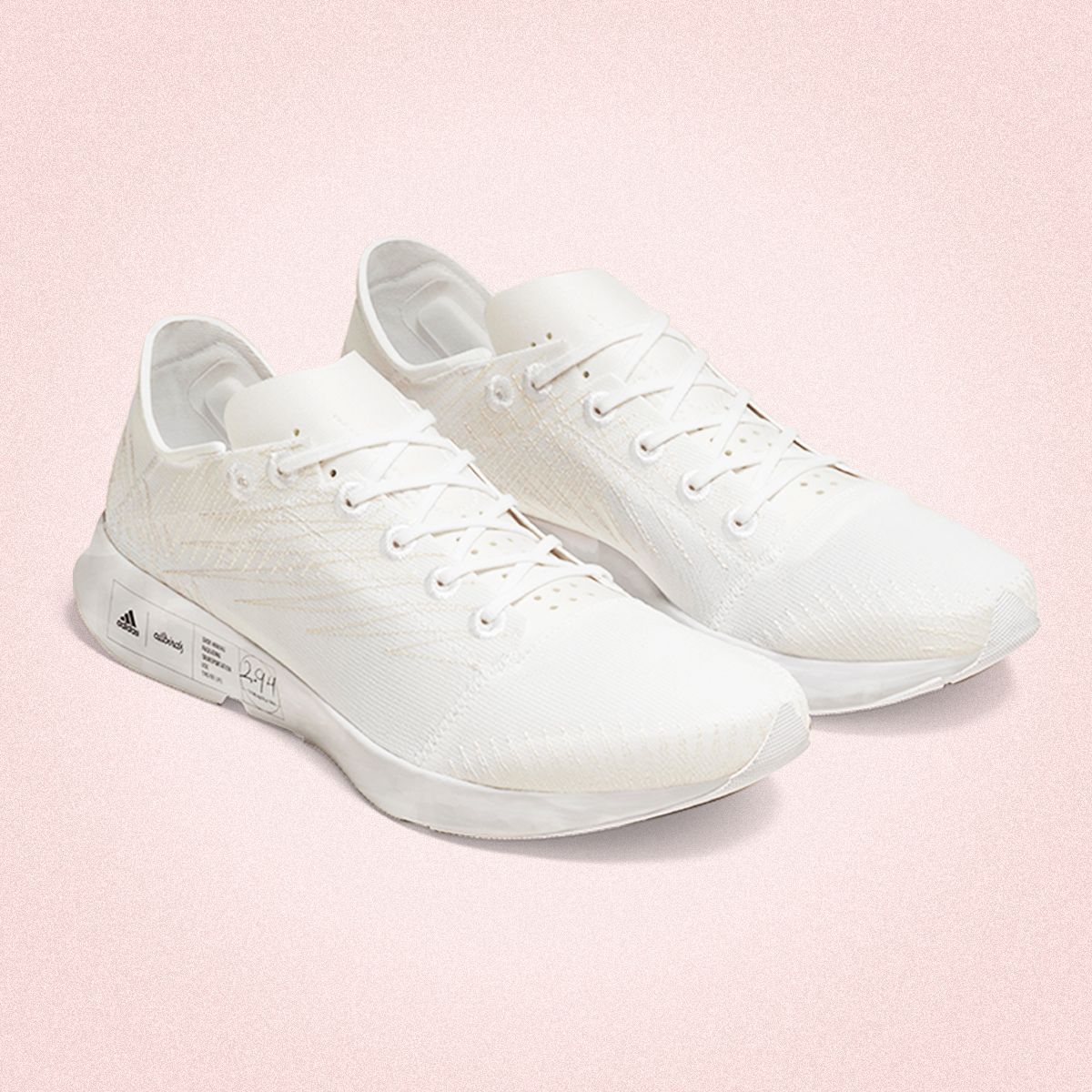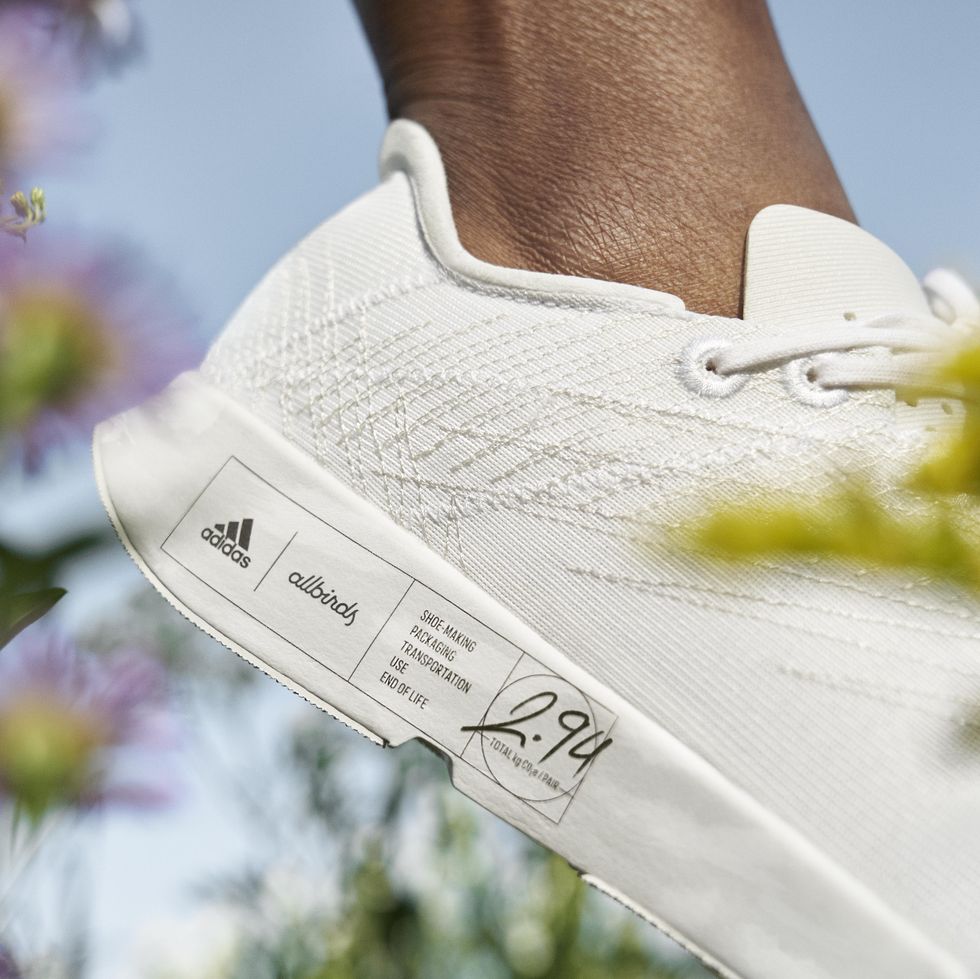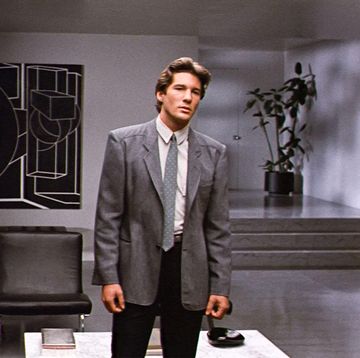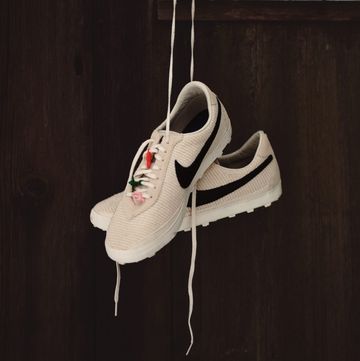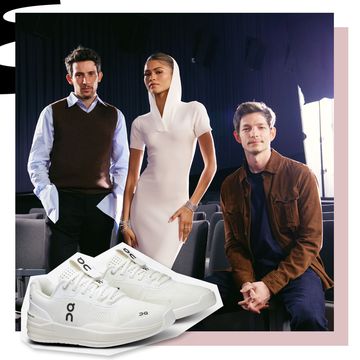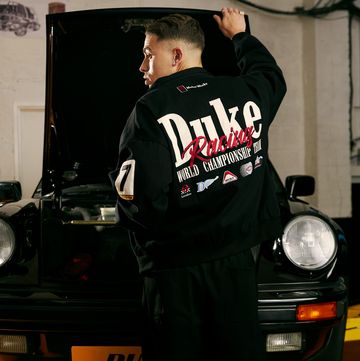Let's start with the number 3. Well, actually, that's rounding up. And as you'll see, precision is important when it comes to the subject matter at hand. So let's get more precise: 2.94. That's the carbon footprint, in kilograms, of the aptly named Futurecraft.Footprint, a sneaker created by Adidas and Allbirds in a year-long project that broke with convention not only in its aggressive stance on sustainability but in the simple fact that two onetime competitors suddenly found themselves acting as collaborators.
You can't buy this sneaker yet, but the purveyors are eyeing a fall release. (The price is also yet to be determined.) And while that means a bit of a wait for eager fans, the knowledge that this sneaker has been developed—and not simply to prove a point, but to be sold to real, live people—should be enough to still get any savvy shopper pretty pumped.
"For me, the most exciting part of this project was just breaking the rules of business a little bit," says Hana Kajimura, the sustainability lead at Allbirds. "The climate crisis is so urgent, all these issues that we face are so urgent. There's no reason why businesses aren't sharing information back and forth to help drive to a low-carbon future. And what's great about this collaboration is in the end it proved what we thought from the beginning: That if we worked together and shared what we both know, that we could get so much further together than either of us could alone."
Before this, neither Allbirds nor Adidas had managed a shoe that broke the 3-kilogram CO2-emissions barrier. Now, working remotely, connecting digitally, and using only methods and materials already available, they've done it. "It's a bit like when athletes are chasing records," says Adidas Future senior designer Florence Rohart. "It's a healthy competition; you challenge each other in a way that makes progress in the bigger picture." Rohart credits Allbirds' evaluative methodology, which looks at everything from materials to shipping to use, with helping bring the sneakers down to "a result that is less than 25 percent the carbon emissions of the industry standard."
"The more evaluation we do with all the learnings that we have, or the more iteration that we do with products and prototypes going forward, the more knowledge we'll have and the better product we can build," she continues. "That's definitely something that we take with us with this collaboration: To rewrite what's possible and take on a new journey."
Functionally, when it comes to the Futurecraft.Footprint, that meant starting with the ultralight Adizero silhouette. A heavier shoe doesn't just mean more raw materials, it also adds more weight to shipping, further increasing its overall footprint. After landing on that initial base, the teams refashioned the midsole by combining Allbirds' sugarcane-based SweetFoam with Adidas' technical know-how to create a component that performed for the low-carbon project as well as the end user—AKA the person who'll be running in these shoes. The upper, undyed and made from 70 percent recycled materials and 30 percent Tencel (which is derived from wood pulp), is reinforced with embroidery instead of additional layers and panels. Fewer materials, less weight, all good.
"It's what we call 'the right amount of nothing,'" says Kajimura. "It's trying to strip away any unnecessary details or components or bells and whistles. So I think that's where the two brands met in the middle. It was less about saying, 'This is an Adidas component and this is an Allbirds component,' but more that if we got to the heart of it, which was low-carbon design, we actually naturally found a place where both brands could meet."
Though the most immediate result of that low-carbon design ethos will be felt with the Futurecraft.Footprint, the ripple effect of this project will surely be seen in other upcoming releases, too. "This collaboration really helped us to evaluate how we work as a brand and how our standard process for creating performance shoes can be challenged," says Rohart. "It was a great learning and a welcome challenge for how we can improve our carbon footprint overall."
All told, it comes down to rethinking the way we make shoes (and everything else). "We've always believed that people don’t buy sustainable products, they buy great products," says Kajimura. "And for too long we've perpetuated this idea either you choose the sustainable option or you choose the one you want. And that is just the wrong tradeoff to be providing customers with. There's absolutely no reason why it can't be both."
